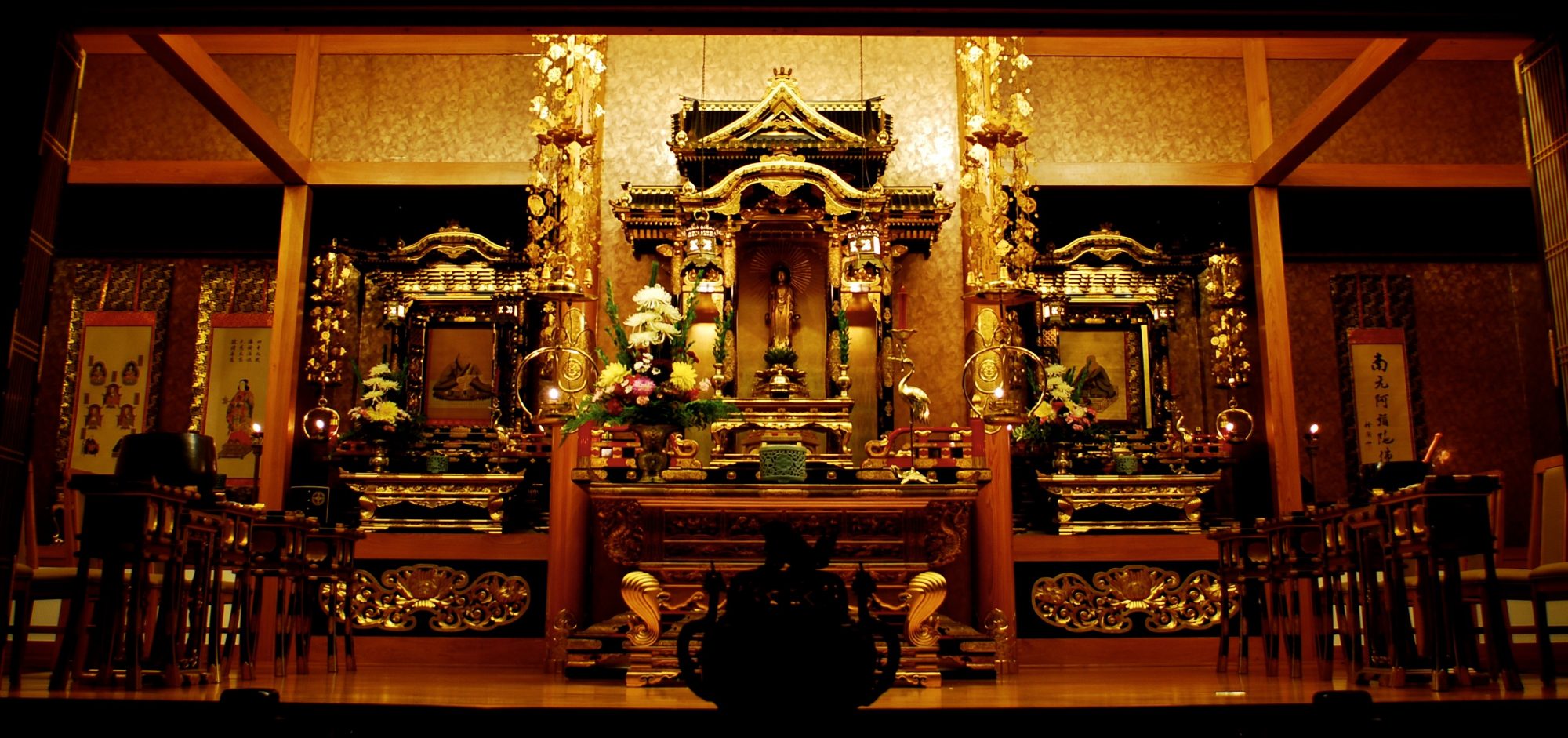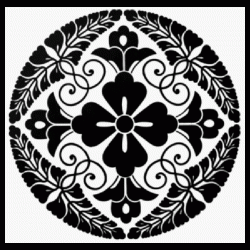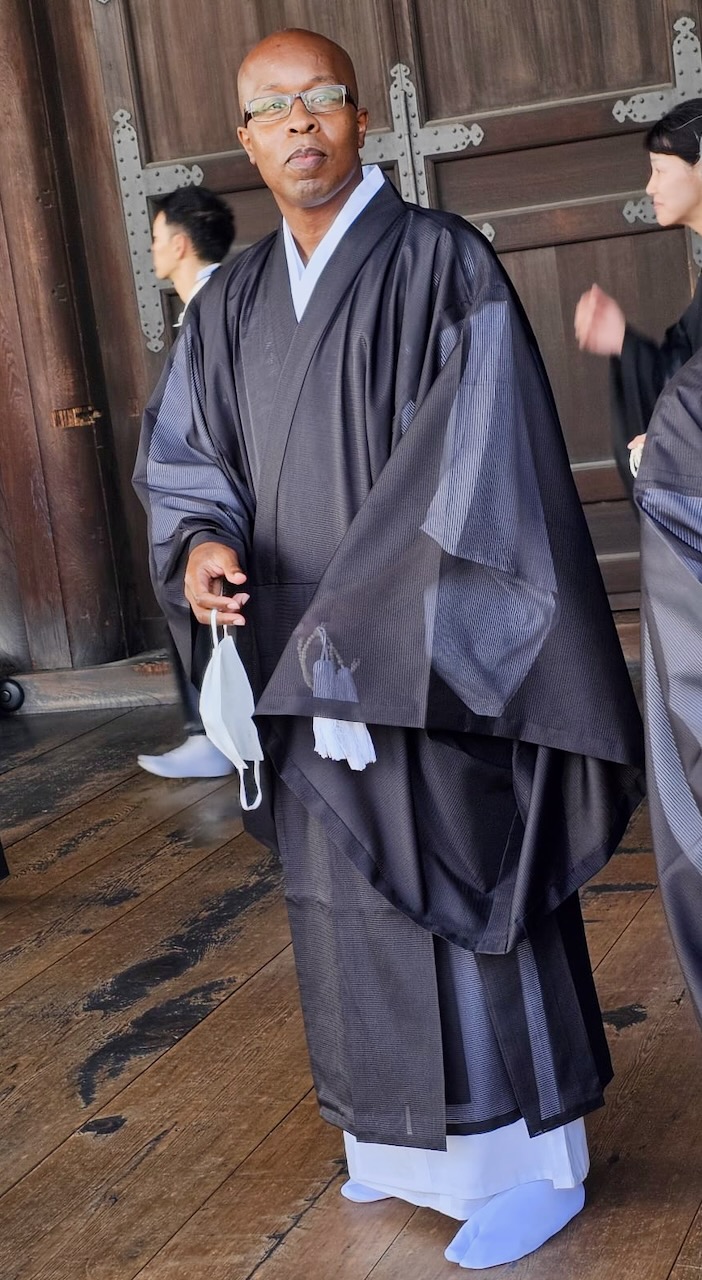 By Victor Ogundipe
By Victor Ogundipe
Aspiring for the Other Shore of awakening, I made a commitment to learn, share, and live the Buddhadharma with our sangha. That’s why I received tokudo ordination from Higashi Honganji, which took me to Japan for the first time last year.
I’ve come to realize being ordained isn’t about the ceremony or achieving something. It’s about reflecting on my so-called “self.” It’s not about “going up,” but rather “going down”—seeing my delusions, becoming humble, and understanding myself more clearly.
Shinran Shonin wrote: “I am such that I do not know right and wrong / And cannot distinguish false and true / I lack even small love and small compassion / And yet, for fame and profit, enjoy teaching others.”
I’d like to share three insights gained from my trip to Japan. The first involves a 100 yen coin, the second a bench in front of a temple, and third, seeing Dharma in everyday life.
¥100 Coin
Preparing for ordination means acquiring minister robes for use in the ceremony and eventually for temple rituals and services. Berkeley’s Rev. Ryoko Osa accompanied me to Japan. In Kyoto, we entered a robe shop which was buzzing with activity. The male employees—all in suits and ties—greeted us warmly.
Suzuki-san helped me try on robes, which was an entirely new experience. Thankfully he was kind and patient. He made alterations, we finished our transaction, said our goodbyes, and left the store.
While walking back to the mother temple, I saw someone on a bike barreling towards us at top speed waving his hands. It was Suzuki-san. Out of breadth, he jumped off his bicycle, and handed me a 100 yen coin, which I’d neglected to take. Mind you, everything altogether cost about ¥150,000 (about $1,000). This coin was worth only about 70 cents. But Suzuki-san’s sense of urgency felt like we’d forgotten the robes themselves.
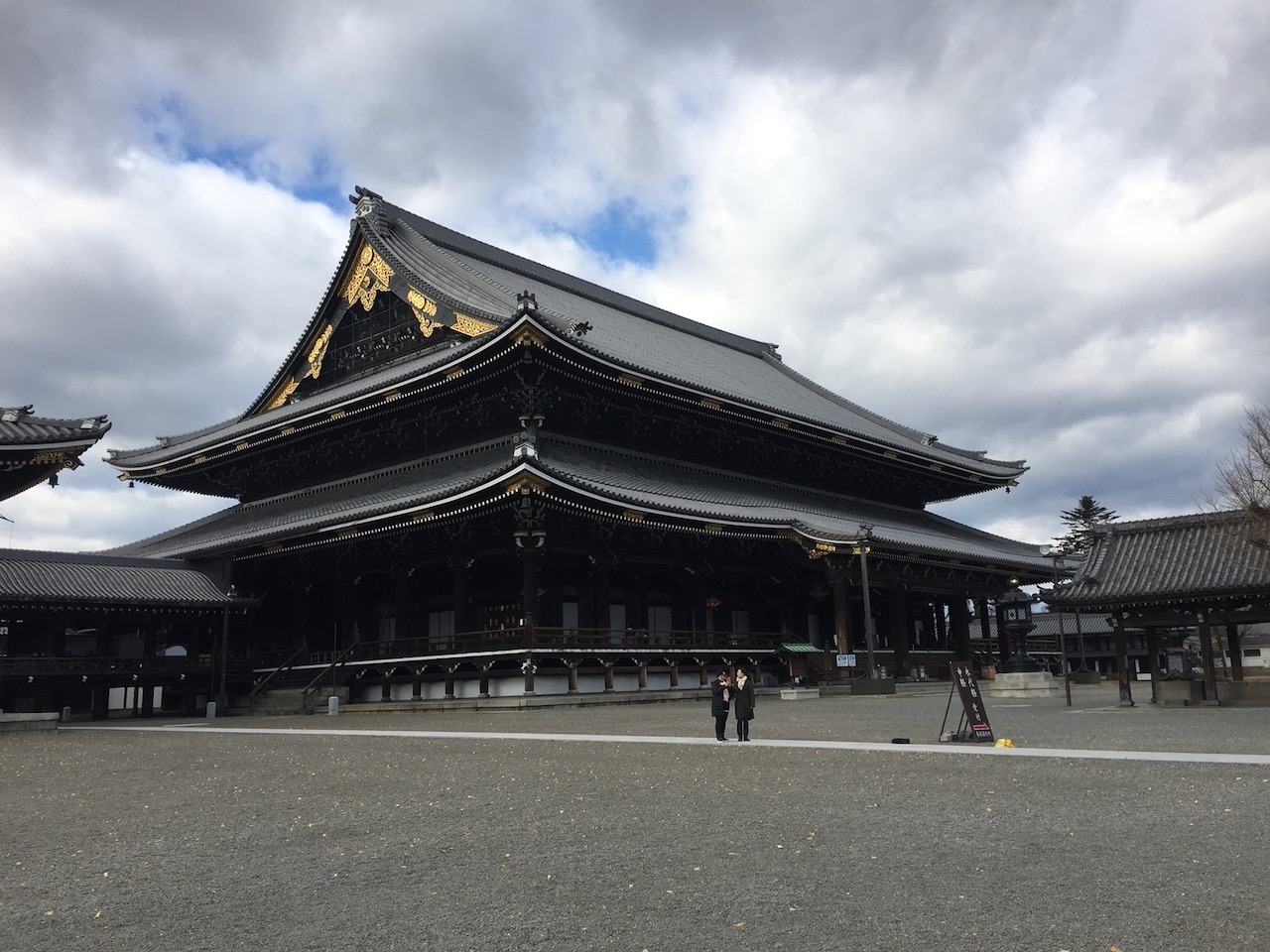
In this act, I felt he lived Shinran Shonin’s teachings, showing me tokudo’s true meaning—helping others and appreciating the importance of every action. For Suzuki-san, the amount didn’t matter; it’s all about the bigger picture.
Shinran talked about Other Power, turning one’s heart towards a “deep warmth for friends and fellow-practicers.” Suzuki-san showed me the importance of “going down”—”not up”—and being humble right now in this life. This is “Namu Amida Butsu.”
A temple bench
Rev. Nakajima, a good friend of Rev. Osa’s, met us at Rokkakudō temple in Kyoto. He’s resident minister of a local Jodo Shinshu temple. Shinran made a 100-day pilgrimage to Rokkakudō, where he dreamed of Prince Shōtoku, after which he became a disciple of Hōnen Shōnin. Impressed by this story, Rev. Nakajima made a similar pilgrimage, walking the vast distance between Mount Hiei and Rokkakudō.
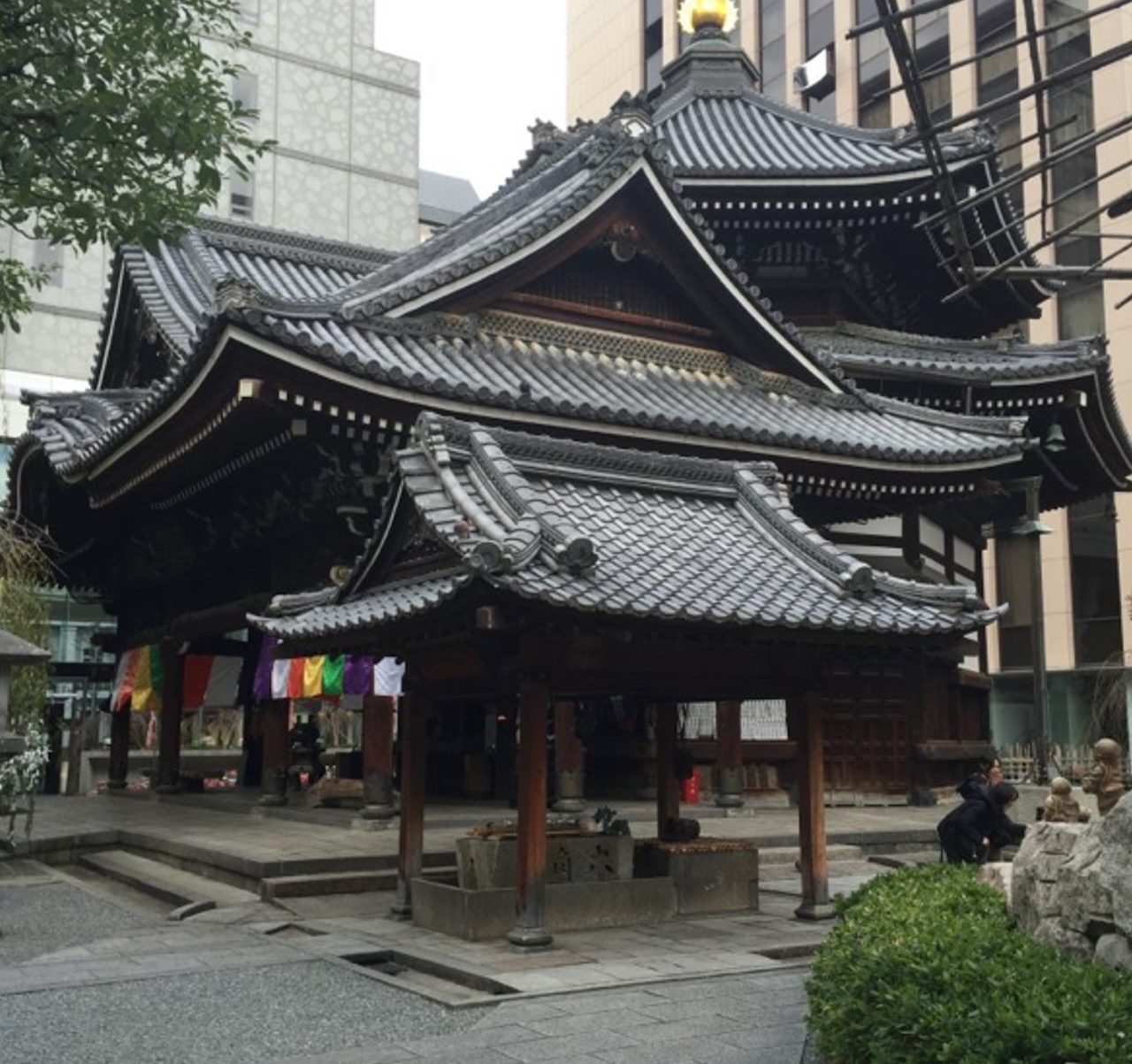
After my tokudo ceremony, we visited Rev. Nakajima at his home temple. He guided us inside the hondō (main hall), then disappeared for a moment. He returned with wagashi, a sweet bean confection beautifully shaped and served with green tea. It was delicious.
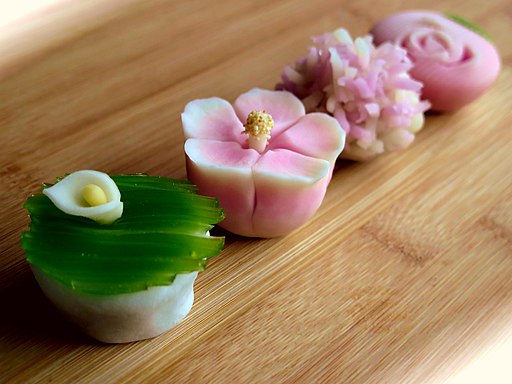
Rev. Nakajima explained how near the temple’s front entrance is a bar where he’s the bartender. I thought how this situation truly reflects Shinshū teachings: connecting with people and sharing the Buddhadharma in various unique ways.
He told us how on a hot day, an elderly woman waited for a bus in front of his temple. The temple’s awning provided shade but there wasn’t anywhere to sit, so he brought her a chair. Afterwards, he built a bench so people could find respite on hot summer days.
What a beautiful but simple story. Rev. Nakajima saw a way to help others and simply acted. This was the Dharma in action. Through this story, I again learned how tokudo was about “going—not up—but down.” Going down to people’s struggles, to the sangha, to our communities, to the world at large. In this way, I felt Shinran encouraging me to naturally and without thought move my hands and feet to meet suffering in this world.
No Ears
My last recollection is about learning to hear the Dharma.
Since returning home, I really miss attending the mother temple’s morning service. Leaving for service about 7 a.m., Kyoto’s streets were calm with few cars on the road. Walking with quiet intentionality, we passed shops making fresh tofu.
At honzan, I heard chanting of Amida Sutra, Shōshinge, Nembutsu, Wasan, and Rennyo’s letters. Afterwards came a Dharma talk. Each morning different ministers from various regions of Japan gave the talk.
Sitting on the temple’s tatami mats, Rev. Osa translated in real-time. Since I’m a novice in Japanese, I couldn’t understand by myself. Still, I sensed different ways Shinran’s teachings are shared throughout the country.
One speaker related Shinshū to a John Lennon song. Another speaker told how a mother, who had passed away, continues to guide her family through a sense of Other Power. The various talks made me think about the Buddhadharma in different and deeper ways.
While listening to Rev. Osa’s translation, I simultaneously heard the minister’s talk in Japanese. The speaker expressed emotion in an unfamiliar language, while I listened to English in a familiar voice.
Needing someone to translate for me is humbling. Even with ears, I couldn’t hear. I depended on someone else to be my ears and mouth. In this way I learned about Japan’s language, culture, and history. I was so grateful to Rev. Osa.
Moreover, Rev. Osa’s help didn’t start in Japan but much earlier. All along, she’s been patiently explaining Shinran’s teachings, leading our Monday study group, and helping me chant Shōshinge. Along with Rev. Hasegawa’s help, I’ve been learning about services and rituals, and the meaning of belonging to a sangha. These are ways I’ve been given “ears” to hear the Dharma. It’s about “going down, not up.”
These are some insights gained since my tokudo ordination.
(This month, Victor will be training in Japan to become a fully ordained Higashi Honganji minister. He is a student at the Institute of Buddhist Studies and helps at Berkeley Higashi Honganji Temple in California.)
